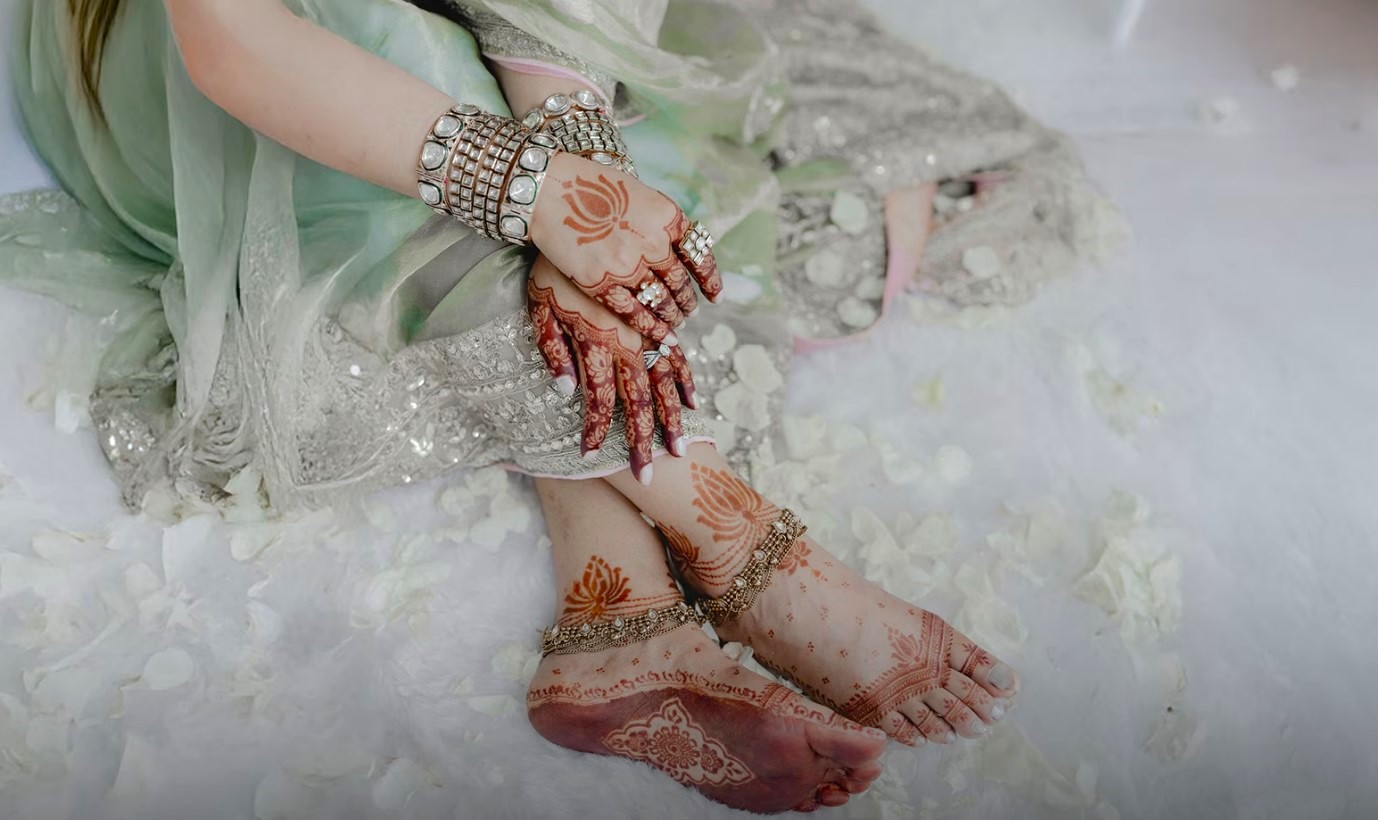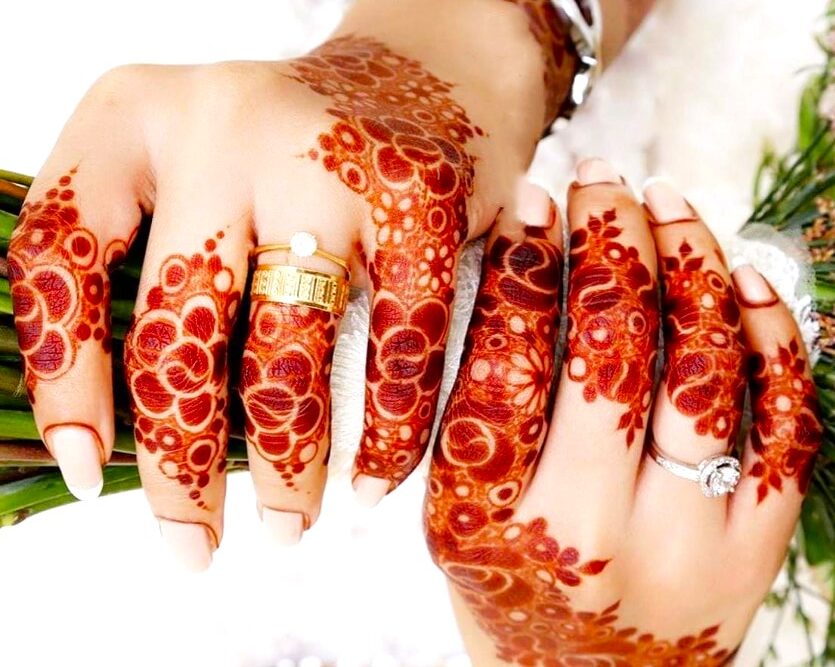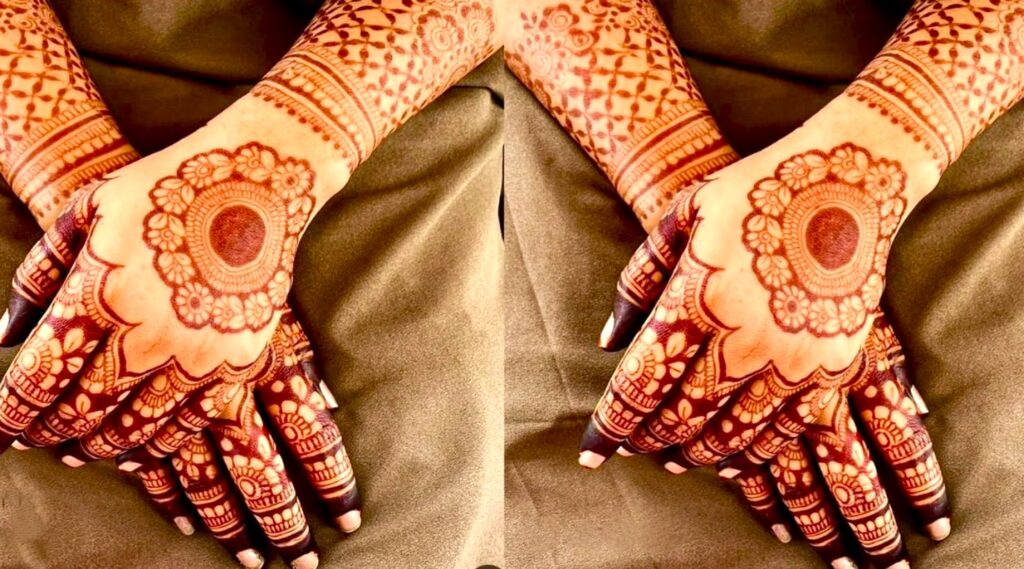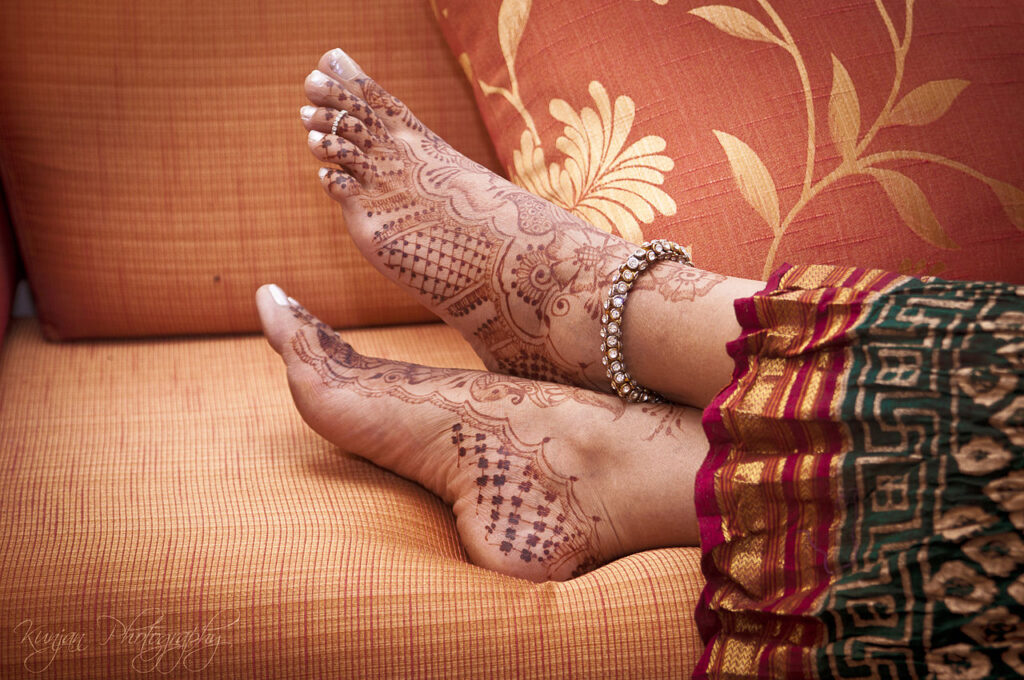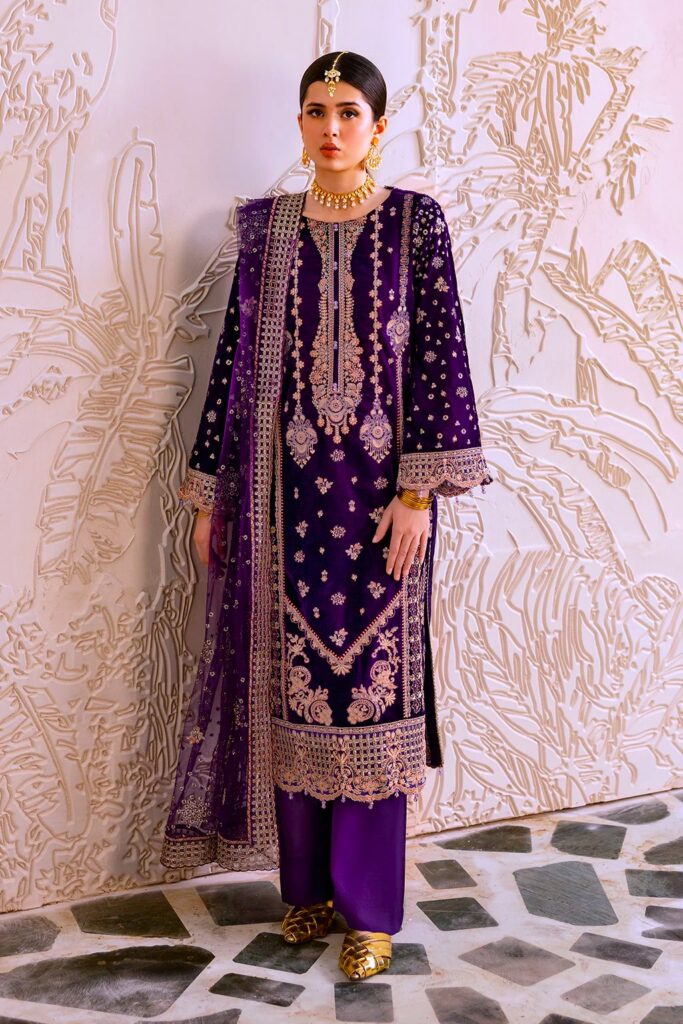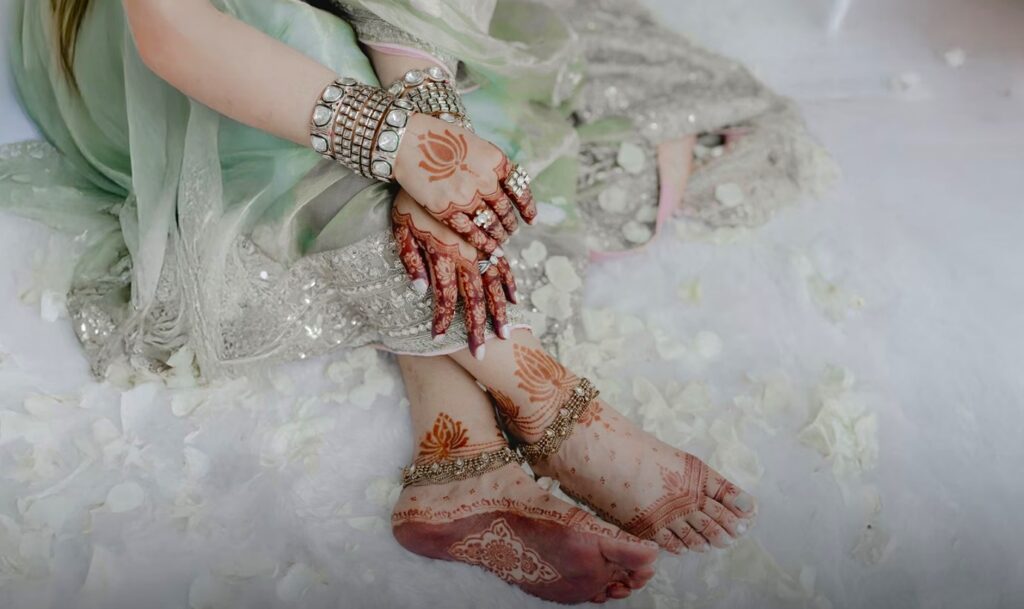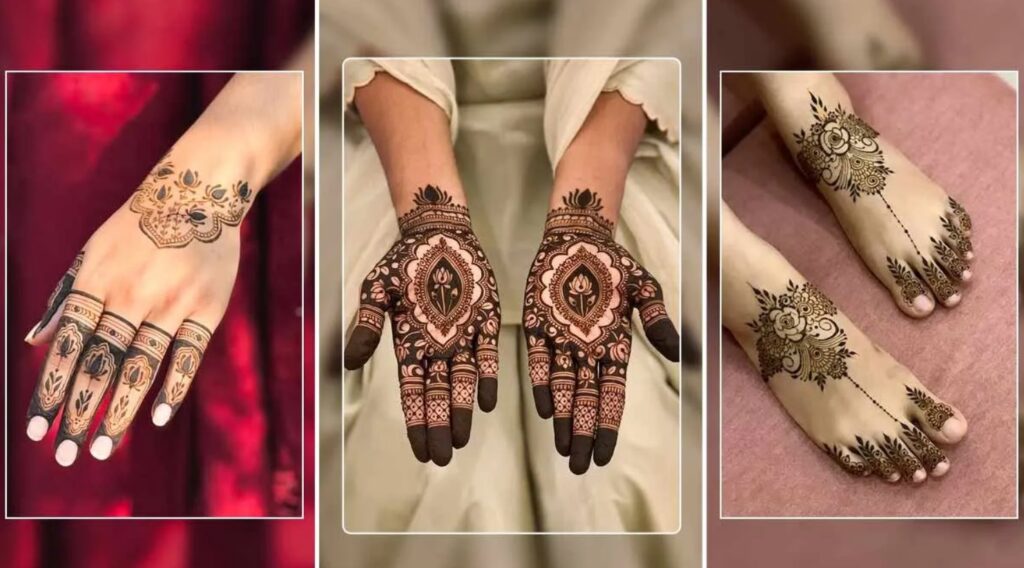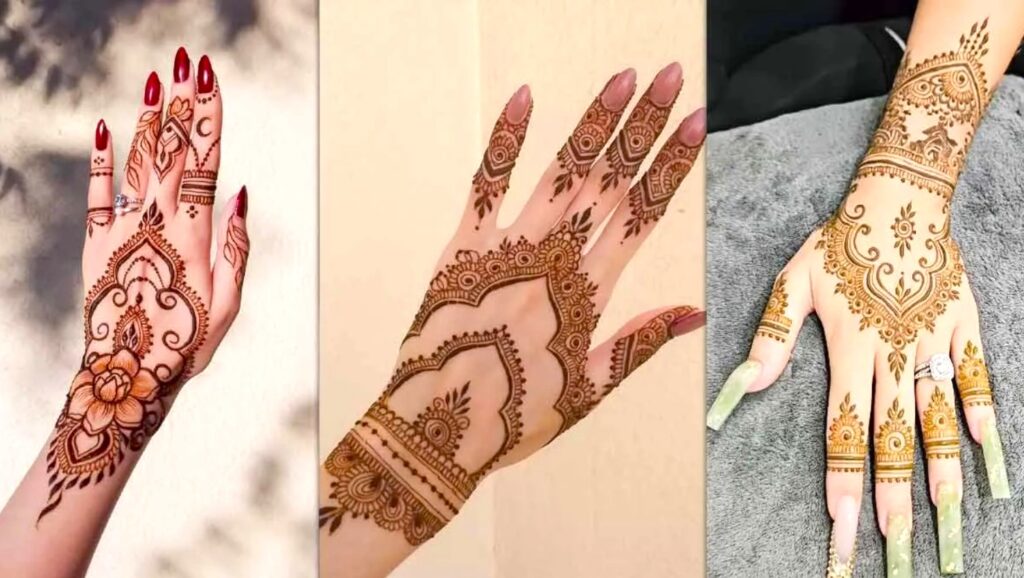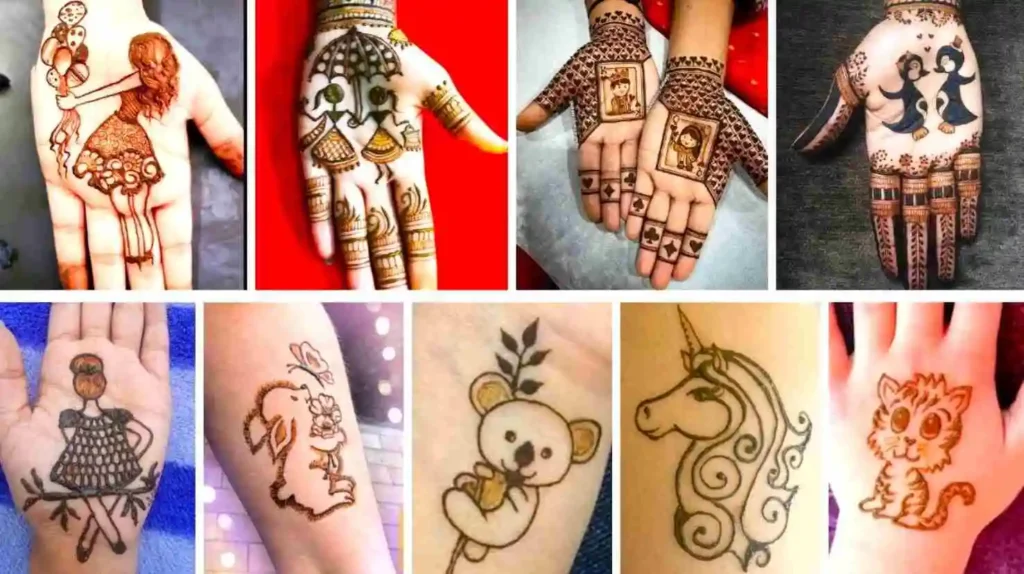Finger Mehndi Design Ultimate 2025 Trends
Table of Contents
Introduction
Finger mehndi design has exploded in popularity, transforming from a traditional bridal necessity to a global fashion statement. No longer confined to the full palm, intricate patterns now gracefully dance along the fingers, offering a modern, chic, and versatile way to wear this ancient art. Whether you’re a bride preparing for her wedding, an attendee at a festive celebration, or simply someone looking to add a touch of bohemian elegance to your everyday style, the allure of finger adornment is undeniable.
This comprehensive guide delves deep into the world of finger mehndi design, exploring its rich history, its profound cultural significance, and the latest trends dominating 2025. We will walk you through everything from choosing the perfect pattern for your hand shape to a step-by-step application guide and crucial aftercare tips to ensure your design stains a rich, dark maroon. Beyond the aesthetics, we’ll uncover the surprising benefits and potential drawbacks, equipping you with expert knowledge to fully appreciate this beautiful form of self-expression. Prepare to be inspired as we journey through the delicate and captivating universe of finger mehndi design, where tradition meets contemporary artistry in the most stunning ways.
What is a Finger Mehndi Design?
A finger mehndi design specifically refers to the application of mehndi paste to the fingers, often extending from the knuckles to the fingertips, and sometimes even onto the nails. Unlike traditional full-hand designs that focus on a central palm motif, finger-centric patterns highlight the length and elegance of the fingers themselves. This style can range from delicate, minimalist lines and dots to elaborate, dense patterns that wrap around the finger like intricate jewelry.
The beauty of this approach lies in its flexibility. A finger mehndi design can stand alone for a subtle, everyday look, or it can serve as an extension of a more complex full-hand mendi design. It beautifully complements various aesthetics, from the ultra-modern to the deeply traditional. This versatility has made it a favorite among younger generations and those who prefer a less permanent alternative to actual tattoo design, yet desire a similar level of artistic detail and personal statement.
The Rich History and Cultural Roots of Mehndi
The story of mehndi is a tapestry woven through centuries and across continents. Its use can be traced back to ancient Egypt, where it was believed Cleopatra used henna to adorn her body. Evidence also points to its prevalence in ancient India and the Middle East over 5,000 years ago. The plant, Lawsonia inermis, from which the henna paste is derived, was cherished not just for its cooling properties but also for its ability to create beautiful, temporary art.
In many cultures, particularly across the Indian subcontinent, the Middle East, and Africa, mehndi is deeply embedded in rituals and celebrations. The most prominent of these is the Mehndi ceremony, a pre-wedding event where the bride’s hands and feet are adorned with intricate patterns symbolizing love, prosperity, and the bond of marriage. It was believed that the darker the finger mehndi design stained, the deeper the love between the couple would be. Beyond weddings, mehndi is applied during festivals like Eid, Diwali, and Karva Chauth, marking these occasions with joy, blessing, and a connection to heritage.
“Finger mehndi is the language of adornment, a 5,000-year-old tradition where fingertips whisper ancient stories. From Cleopatra’s court to modern catwalks, this art continues to captivate hearts across civilizations.” Wikipedia
Symbolism in Patterns: Traditional motifs are not random; they carry deep meanings.
Peacocks: Represent beauty and grace.
Lotus Flowers: Symbolize purity and spiritual awakening.
Swans: Stand for everlasting partnership.
Paisley (Mango): signifies fertility and good fortune.
Why Finger Mehndi Design is Gaining Immense Popularity
The shift towards finger mehndi design is a reflection of modern fashion sensibilities. In today’s fast-paced world, not everyone has the time or desire for a full, dense palm mendi design that can take hours to apply. Finger designs offer a quicker, more manageable alternative without sacrificing elegance. They are perfectly suited for the digital age, where hands are constantly on display—typing on keyboards, holding phones, and appearing in video calls.
Furthermore, the influence of social media platforms like Instagram and Pinterest cannot be overstated. These visual platforms have become global galleries for henna artists to showcase their creativity, with finger mehndi design often taking center stage due to its photogenic quality. The trend also aligns with the growing popularity of finger tattoos, providing a non-permanent way to test a style. This has democratized the art form, making it accessible to people of all backgrounds who appreciate it as a form of wearable art rather than solely a cultural tradition.
Top Finger Mehndi Design Trends for 2025
The world of finger mehndi design is constantly evolving. 2025 is set to embrace a blend of minimalism, bold statements, and innovative fusion styles. Here’s a breakdown of what’s trending.
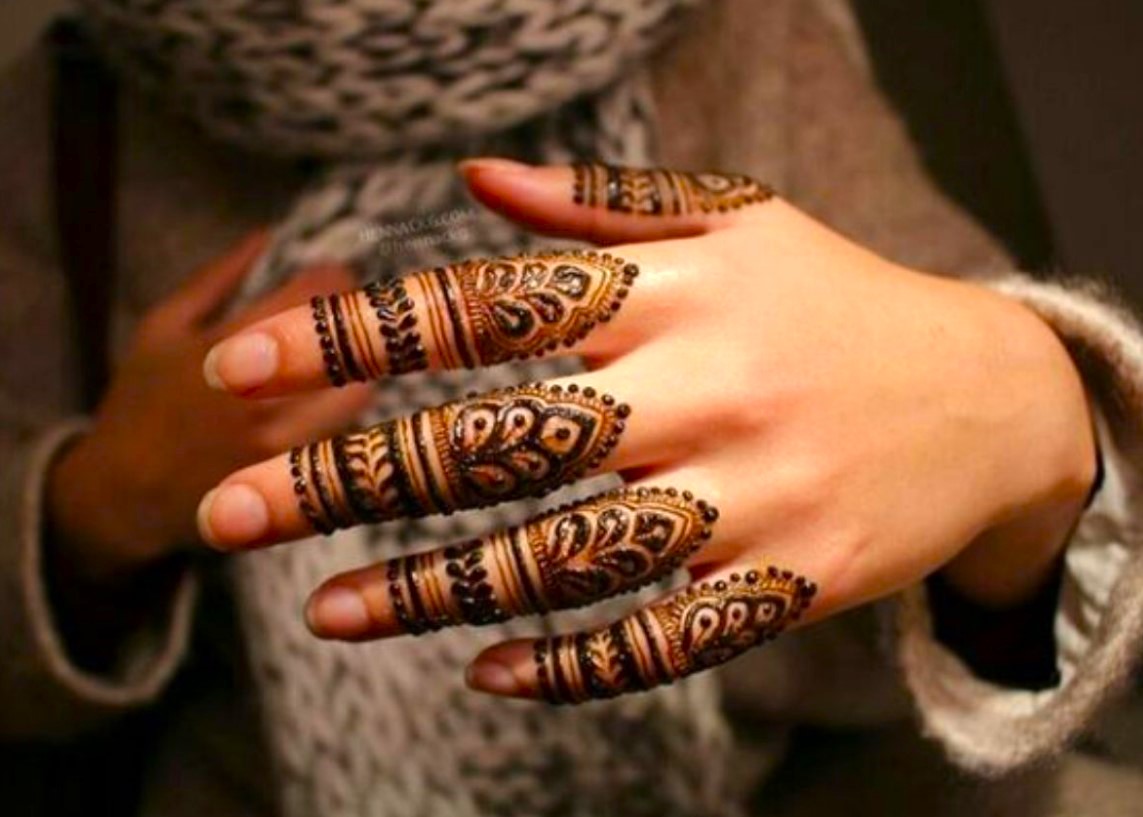
Minimalist and Negative Space Designs
Less is more in 2025. Think thin, delicate lines, tiny dots, and simple geometric shapes that accentuate the finger’s natural length. Negative space is used strategically, where the bare skin becomes part of the mendi design. A single line running down a finger with a small dot at the tip, or a minimalist crescent moon on a fingernail, are perfect examples. This style is ideal for first-timers or for a subtle, office-appropriate look.
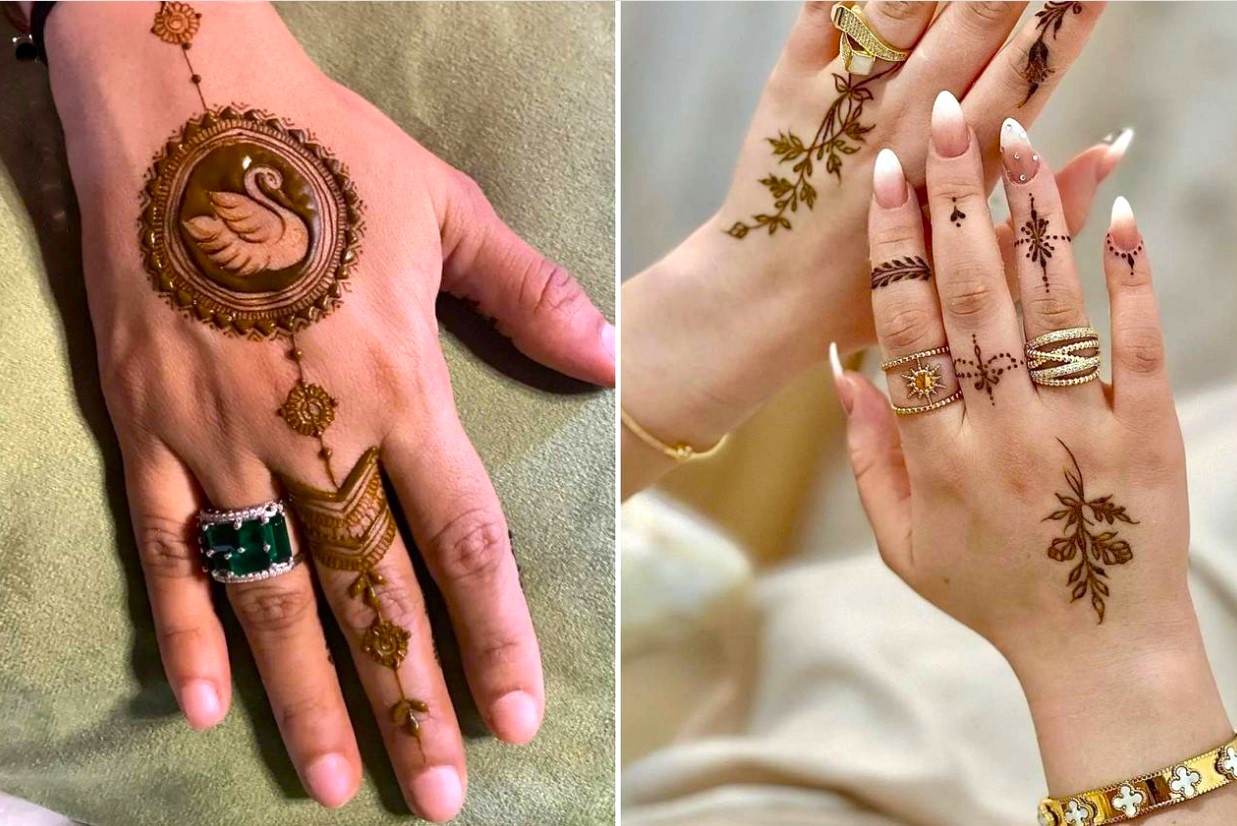
Statement Finger Cuffs and Knuckle Designs
On the opposite end of the spectrum, statement finger cuffs are making waves. These designs create the illusion of intricate jewelry, wrapping around the finger like a ring or a cuff bracelet. They often feature dense patterns, shimmer (added with cosmetic-grade glitter), or even tiny jewels placed in the dried paste. Knuckle-focused finger mehndi design, with a unique motif on each knuckle, is also a playful and highly personalized trend.
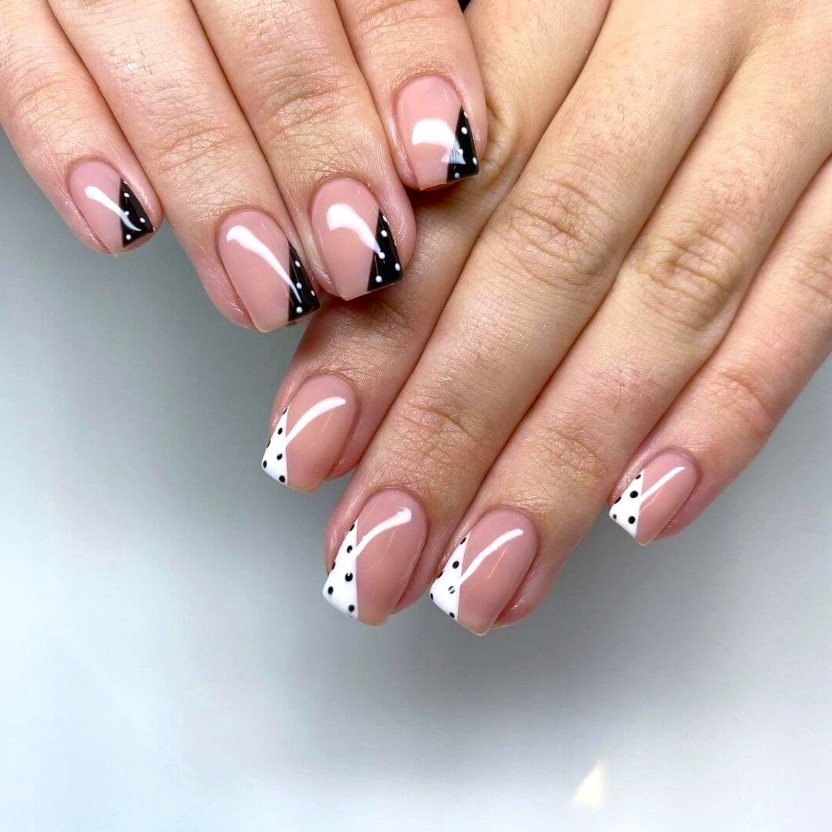
Fusion with Nail Art and Nail Tips
Why choose between mehndi and nail art when you can have both? A major 2025 trend is the seamless integration of finger mehndi design with manicures. The henna patterns can be drawn to flow directly onto the nail, complementing the nail polish color or French tips. For those with longer nails, the design can extend all the way to the nail tip, creating a dramatic, elongated effect.
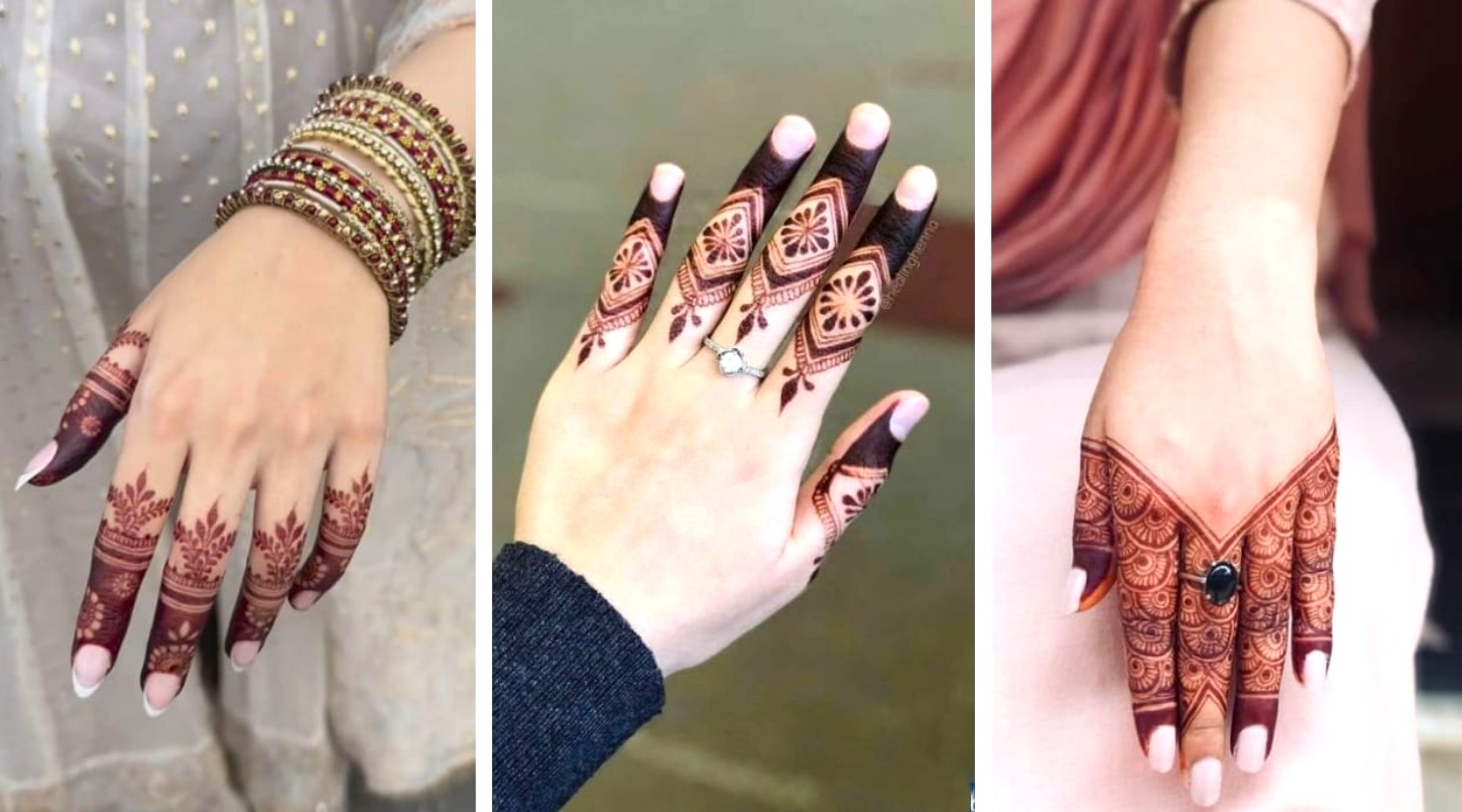
Abstract and Geometric Patterns
Moving beyond traditional florals and paisleys, abstract and geometric patterns are gaining traction. Sharp angles, clean lines, mandalas, and modern art-inspired doodles offer a contemporary twist. This style appeals to those who want a finger mehndi design that feels more like a modern tattoo design, often blending cultural heritage with individualistic expression.
A Step-by-Step Guide to Applying Your Own Finger Mehndi Design
Applying your own finger mehndi design can be a rewarding experience. With patience and practice, you can create beautiful art at home.
Preparation: Getting Your Skin and Cone Ready
Proper preparation is key to a dark, long-lasting stain. Start by washing your hands thoroughly with soap to remove any oils. Do not use a moisturizer. Next, lightly exfoliate the area you plan to decorate; this removes dead skin cells and creates a smoother canvas. If you’re making your own paste, ensure it has the right consistency—not too runny, not too thick. For pre-made cones, snip a very tiny tip off the end. You can always cut more if needed, but you can’t reverse a hole that’s too big.
The Application Process: Techniques for Clean Lines
Rest your hand on a flat, stable surface. Before you start with the henna, practice the finger mehndi design with a washable marker or a toothpick. When you’re ready, hold the cone like a pencil and apply even, gentle pressure. Let the paste flow out; don’t push it. Start from the top of the design and work your way down to avoid smudging. For clean lines, use your pinky finger as a stabilizer on your skin. If you make a mistake, use a cotton swab dipped in lemon juice to carefully wipe it away before it dries.
Aftercare: The Secret to a Dark, Lasting Stain
This is the most crucial part. Let the paste dry completely on its own. Avoid blowing on it with your mouth, as saliva can introduce bacteria and lighten the stain. Once dry and crackly, you can spritz a light mixture of lemon juice and sugar water over it to seal it and add flexibility. Leave the paste on for as long as possible—ideally 6-8 hours or overnight. To avoid a mess while sleeping, you can wrap your hand loosely in tissue and secure it with a sock or gauze. When removing the paste, scrape it off; do not wash it with water. For the next 24 hours, avoid water on the design as much as possible. When you do wash your hands, avoid soaps directly on the design.
Image Suggestion: An infographic showing the three key steps: Preparation, Application, and Aftercare, with simple icons for each.
ALT Text: Step-by-step infographic for perfect finger mehndi design application.
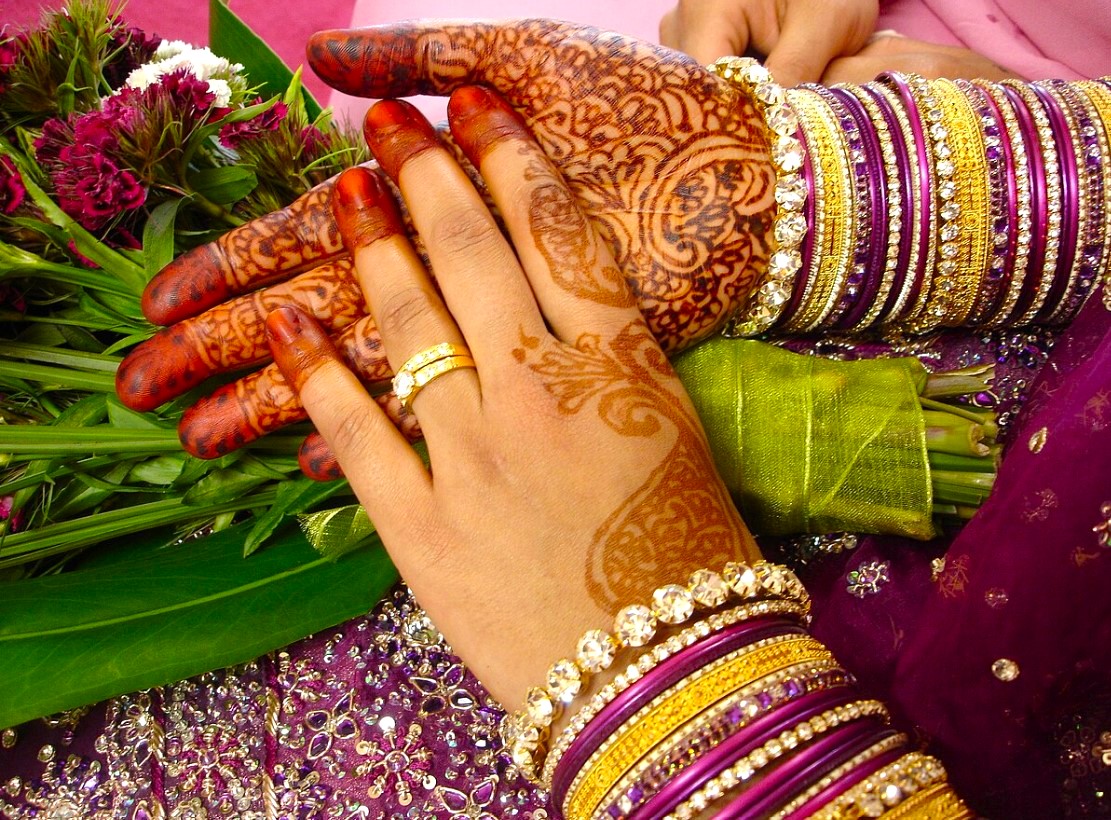
The Benefits and Drawbacks of Finger Mehndi
Like any beauty treatment, finger mehndi design comes with its own set of pros and cons.
Benefits
Natural and Generally Safe: Pure, natural henna is made from a plant and is safe for most skin types, unlike some chemical-laden temporary tattoos or certain inks used in permanent tattoo design.
Temporary and Low Commitment: A design typically lasts 1-3 weeks, allowing you to change your style frequently without the permanence of a tattoo.
Cost-Effective Adornment: Compared to jewelry or permanent tattoos, mehndi is an affordable way to accessorize and make a fashion statement.
Therapeutic and Meditative: The application process can be a calming, creative, and almost meditative experience for both the artist and the wearer.
Drawbacks
Risk of Allergic Reactions: It is critical to use only natural henna. “Black Henna” often contains a harmful chemical called PPD (para-phenylenediamine), which can cause severe skin allergies, blistering, and permanent scarring.
Time-Consuming Application: Intricate designs require a steady hand and can take a significant amount of time to apply correctly.
Messy Application and Removal: The paste can be messy to work with, and the drying and flaking phase can be inconvenient.
Not Entirely Smudge-Proof: Before it dries, the design is very vulnerable to smudging, which can ruin hours of meticulous work.
Expert Tips and Tricks for the Perfect Finger Mehndi
To elevate your finger mehndi design from good to great, consider these professional tips.
Choose the Right Paste: Always opt for 100% natural henna powder or cones from a reputable source. The ingredients should only list Lawsonia inermis and other natural components like essential oils and sugar.
Master the Cone: Practice your pressure control and line work on a piece of paper or a lemon before moving to your skin. This helps you get a feel for the flow.
Work with Your Hand Shape: If you have shorter fingers, use vertical lines and patterns to create an illusion of length. For longer fingers, horizontal bands and knuckle designs can look stunning.
Add Eucalyptus Oil: After the paste has fallen off and the design has fully oxidized (turned dark), applying a little eucalyptus oil balm can help protect the stain and make it last a few days longer.
Keep it Simple at First: If you are a beginner, don’t attempt an overly complex mendi design. Start with basic lines, dots, and leaves. Master these fundamental elements before progressing to more intricate patterns.
Common Finger Mehndi Mistakes to Avoid
Avoiding these common pitfalls will ensure a better experience and a more beautiful result.
Rushing the Drying Process: Using a hair dryer on a hot setting or blowing with your mouth will cook the henna and result in a lighter, patchy stain. Patience is key.
Applying on Oily or Moisturized Skin: Any barrier on the skin will prevent the dye from binding properly, leading to a faint design.
Using “Black Henna”: This cannot be stressed enough. Always test a small dot of henna on your inner arm and wait 20-30 minutes to check for any reaction, even with natural henna.
Washing with Soap Too Soon: Soap strips the oils that hold the dye in the skin. Avoid direct contact with soap for at least 24-48 hours after application.
Overcomplicating the Design: A cluttered finger mehndi design can look messy and lose its elegance. Sometimes, simplicity has a greater impact.
Finding Inspiration: From Bridal Glam to Boho Chic
Your finger mehndi design should reflect your personal style. Here are some inspirational avenues to explore.
Bridal Finger Mehndi: While traditionally full-handed, modern brides are incorporating intricate finger mehndi design elements. Look for designs that incorporate the bride’s and groom’s initials hidden within the patterns, or motifs that represent their love story.
Bohemian and Festival Styles: Think flowy, unstructured patterns with lots of feathers, dreamcatchers, and vines. This style is perfect for music festivals and a free-spirited look.
Arabic and Moroccan Influences: Arabic mendi design is characterized by large, flowing floral motifs and leaves, while Moroccan styles feature more geometric precision. Both can be beautifully adapted to finger designs.
Fusion with Western Tattoo Art: Look for artists who blend traditional mehndi with Western tattoo design styles like fine-line, dotwork, or even watercolor splashes for a truly unique creation.
The Future Scope of Finger Mehndi Design
The future of finger mehndi design is bright and boundary-pushing. We can expect to see even more fusion with technology, such as digital tutorials using AR filters to preview designs on your own hands. The use of colored and glitter henna (using skin-safe, natural pigments) is also on the rise. Furthermore, as the world becomes more interconnected, finger mehndi design will continue to evolve as a universal language of art and adornment, respected for its cultural roots while being embraced for its limitless creative potential.
Frequently Asked Questions (FAQs)
1. How long does a finger mehndi design last?
A well-applied finger mehndi design with proper aftercare typically lasts between 1 to 3 weeks. It stains darkest on the first day and gradually fades as the skin exfoliates naturally. Areas with thicker skin, like the palms, last longer than the fingers, which see more movement and washing.
2. What is the difference between mehndi and a tattoo design?
Mehndi is a temporary body art using a natural plant-based paste that stains the top layers of the skin, lasting up to 3 weeks. A tattoo design is permanent, created by injecting ink into the deeper dermis layer of the skin. Mehndi is a commitment-free way to experiment with body art.
3. Can I create a finger mehndi design at home?
Absolutely! With practice, you can create beautiful finger mehndi design at home. Start with a pre-made cone of natural henna, practice on paper first, and begin with simple patterns like lines and dots. Patience and a steady hand are your best tools.
4. How can I make my finger mehndi stain darker?
For a dark stain, ensure your skin is oil-free and exfoliated before application. Leave the dried paste on for 6-8 hours (or overnight). Keep the design warm after application and avoid water for the first 24 hours. A sugar-lemon sealant spray also helps.
5. Is black henna safe for a finger mehndi design?
No, black henna is unsafe and should be avoided. It contains the chemical PPD at high levels, which can cause severe allergic reactions, chemical burns, and permanent scarring. Always insist on 100% natural henna for your mendi design.
6. What are some simple finger mehndi designs for beginners?
Beginners should start with minimalist styles. Try a single line from knuckle to fingertip, a series of tiny dots along the finger bone, a simple leaf motif on the side of a finger, or a small geometric shape like a triangle or diamond on the knuckle.
7. How do I remove a mehndi design quickly?
If you want to remove the stain faster, exfoliation is key. Use a scrub, a loofah, or soak in a hot bath and gently scrub the area. The finger mehndi design will fade naturally with frequent hand washing and exfoliation over a week or two.
8. Can finger mehndi be used for everyday wear?
Yes, the rise of minimalist finger mehndi design makes it perfect for everyday wear. Simple, delicate lines and tiny symbols offer a subtle and elegant accessory that complements both casual and professional attire, much like dainty rings.
9. What does a faded finger mehndi design look like?
As it fades, a finger mehndi design becomes lighter and more orange in tone before turning a faint yellowish shadow. The fade is even and gradual, unlike a peeling temporary tattoo design. It doesn’t leave a messy, patchy appearance if applied correctly.
10. Where can I find unique finger mehndi design inspiration?
For endless inspiration, explore social media platforms like Pinterest and Instagram. Search hashtags like FingerMehndi, MehndiDesign, and HennaArt. You can also look at traditional jewelry and modern tattoo design portfolios for unique pattern ideas.
“Transform Your Style Today! Browse 500+ Stunning Mehndi Designs in Our Gallery.” Click Here
Related Articles:
Beautiful and Stylish Finger Mehndi Designs ideas – Elegant Picks for Every Look
Wedding Mehndi Designs 2025 Stylish & Beautiful Ideas
Unique Arabic Bridal Mehndi 2025 Stunning Designs Every Bride Will Love
Royal Back Hand Mehndi Designs 2025 Latest Indian Simple & Stylish Ideas
Top 10 Bridal Mehndi Designs 2025 Graceful, Stylish & Most-Loved Wedding Art

